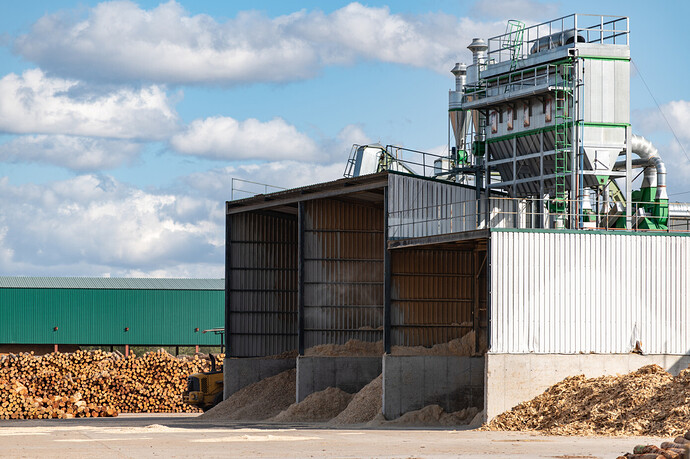Wood pellet production in Russia has fallen sharply since EU sanctions came into full force last July. Prior to that, Russia exported more than 90% of the pellets produced in the country. In 2022, the supply of fuel pellets abroad, according to Lesprom Analytics, fell by 29% to 1.7 million tons.
Wood pellet producers in the North-West of Russia, traditionally focused on the European market, suffered the most from the sanctions. In the Arkhangelsk region, the pellet plants of the ULK Group with a capacity of 220 thousand tonnes and Region-Les (80 thousand tonnes) were closed. Lesozavod-25 (180 thousand tonnes of pellets), which is part of the Titan Group, has significantly reduced its production volume.
According to the owner of the ULC Group Vladimir Butorin, the Russian government intends to allocate 20 billion rubles in 2023-2024 to convert municipal boiler houses from fossil fuels to wood pellets. However, these funds will not be enough to provide demand for all wood pellet production, which is left without the European market.
In the Arkhangelsk region, 557 thousand tons of wood pellets were produced annually. However, only 35 boiler houses can be converted to the consumption of pellets in the region, which will require about 2.5 billion rubles, such an estimate is contained in the presentation of the region’s Ministry of Fuel and Energy. Thus, the conversion of one boiler house will require an average of about 714 million rubles.
According to the Ministry of Natural Resources and Timber Industry of the Arkhangelsk Region, the region consumes 60-80 thousand tonnes of pellets per year. The Ministry expects to ensure domestic consumption of 30% of wood pellets produced in the region, which will amount to 167 thousand tonnes.
At the same time, Nikolai Krotov, adviser to the general director of the Arkhangelsk Pulp and Paper Mill, believes that if all the fossil fuel boiler houses in the region (except for those planned to be gasified) are converted to pellets, this will add only 60 thousand tonnes per year to the consumption of wood pellets in the region . This will allow using only 11% of all pellets produced in the region. With a total output of more than 550 thousand tonnes of pellets, this is clearly not enough.
“Municipal consumption of pellets is not a capacious market. Of course, it is nearby, which is logistically convenient, it is permanent, since a consumer is guaranteed, but it is small,” says Nikolai Krotov. large thermal power plants.” However, the government has no such plans yet, he says.
According to the Ministry of Natural Resources of the Arkhangelsk region, 155 boiler houses with a total capacity of 420 MW (361 Gcal/h) are needed to consume all the wood pellets produced in the region. The volume of necessary investments for the conversion of these boiler houses to pellets will be 17 billion rubles, which corresponds to almost the entire budget that the government plans to allocate in the next two years.
In the Komi Republic, 46 boiler houses are planned to be converted to wood pellets in 2023. About 3.3 billion rubles may be required to re-equip the region’s boiler houses. Due to the high cost of pellet equipment, the preference is given to fuel briquettes and gas in the region, - says Alexander Konyukhov, Deputy General Director for Production of the Sevlespil sawmill.
Another obstacle to the conversion of boiler houses to wood pellets is the inability to use other types of fuel after switching to pellets. In addition, the price of wood pellets (16.3 thousand rubles per tonne) is much higher than the price of gas, coal (7.5 thousand rubles), firewood (8.2 thousand rubles) and wood chips (12.5 thousand rubles) in Russia. Only fuel oil and diesel are more expensive than wood pellets with the prices about 21 thousand rubles and 44 thousand rubles per tonne, respectively.
